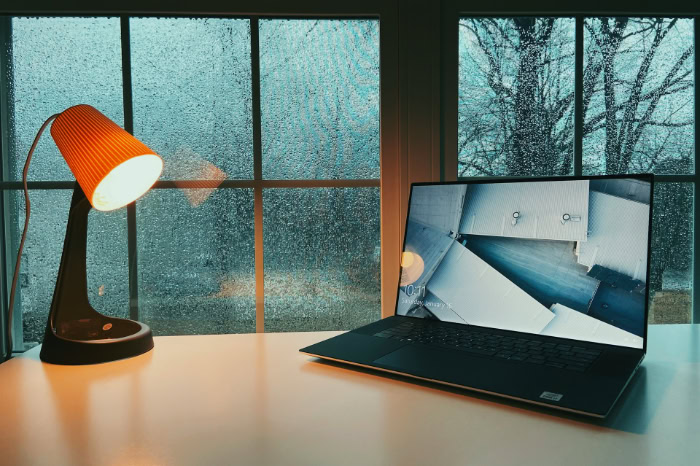How to Protect Your Laptop in Cold Weather

Blustery winds and biting temperatures don’t just make life uncomfortable for people; your laptop feels the chill too. Winter’s cold can sap your battery, threaten sensitive screens, and even put your data at risk, often when you least expect it.
Some laptops may survive harsh conditions, but most consumer devices are surprisingly vulnerable to freezing weather and sudden temperature changes. Taking a few smart steps before and after exposing your computer to the cold can mean the difference between smooth performance and sudden hardware failure.
Protecting your laptop is not just about convenience but also about preserving valuable files and ensuring your device runs reliably all season long.
Understanding Cold Weather Risks to Laptops
Cold weather creates unique challenges for laptops, often putting their hardware and performance to the test. While modern devices are built to handle a range of environments, freezing temperatures can bring a host of risks that undermine reliability and even threaten important files.
Recognizing how winter conditions impact each part of your laptop helps prevent avoidable damage and ensures your device stays functional, no matter how frosty it gets outside.
Battery Performance Degradation
Batteries, especially the lithium-ion type found in nearly all laptops, struggle in low temperatures. Cold exposure slows the chemical reactions inside the battery, leading to a noticeable drop in charge capacity.
Users may find their laptop powers off sooner than usual or refuses to charge fully. On top of that, rapid drops in temperature can prompt the battery to discharge much faster, requiring more frequent charging and reducing overall efficiency.
Repeated cold exposure can also shorten the battery’s lifespan, making replacements necessary sooner than expected.
LCD Screen Vulnerability
Laptop screens are particularly sensitive to cold. Low temperatures stiffen the liquid crystals in LCD panels, which can cause slow response times, image retention, or in severe cases, permanent dead pixels.
Sudden shifts from a freezing environment to a warm room can result in thermal shock, placing stress on the glass and internal layers. This stress may cause visible cracks or distortions that affect screen clarity and function.
Careless handling in winter weather often spells disaster for those delicate displays.
Hard Drive and Data Loss Risks
Mechanical hard drives face significant dangers from freezing temperatures. The moving parts inside, such as the spinning platters and read/write heads, can become sluggish or even seize up due to internal condensation or ice crystal formation.
Returning a cold laptop to a warm place may cause moisture to condense inside, putting stored data at risk of corruption or complete loss if the drive malfunctions. Solid-state drives (SSDs) fare better in the cold but still benefit from cautious handling to avoid data complications and hardware failures.
Material Brittleness
Many laptops rely on lightweight plastic materials for their casings and hinges. Cold air makes plastics brittle, drastically increasing the chance of cracks or breaks when opening or closing your device.
The hinges, in particular, are vulnerable to snapping if moved without sufficient care. Even slight bumps or drops that wouldn’t pose a problem in mild weather might result in significant damage after cold exposure.
Extended periods in freezing temperatures can leave the overall structure of the laptop more fragile than usual, demanding extra caution whenever handling your device.
Preventive Measures for Cold Environments

Frosty weather demands a thoughtful approach to protecting your laptop. Taking a few simple precautions can make all the difference in maintaining performance and avoiding sudden breakdowns caused by freezing conditions.
With the right habits and tools, even the harshest winter weather won’t stand in the way of your device’s safety or reliability.
Insulated Storage Solutions
Choosing a weather-resistant carrying case with built-in thermal padding is one of the most effective ways to protect your laptop from cold temperatures. Specialized bags and sleeves can trap warmth, shielding your device from the immediate impact of icy winds, snow, and freezing rain.
The extra insulation also provides a buffer against sudden temperature shifts, which are especially risky after your laptop has spent time outdoors or in a cold vehicle. Opting for quality materials and snug-fit designs offers an additional layer of security, keeping your laptop cozy and safe, no matter how low the thermometer drops.
Temperature Control Practices
Leaving your laptop in a frigid car or carrying it uncovered through brisk weather creates unnecessary risk. Instead, make a conscious effort to limit your device’s exposure to the elements.
Bring your laptop indoors as soon as possible and avoid placing it near drafty windows, unheated areas, or on icy surfaces. Sudden transitions from cold to warm environments can stress components, so give your laptop a chance to adjust naturally.
Gentle temperature shifts help prevent hardware stress and reduce the risk of condensation forming deep inside the device.
Pre-Use Protocols
After being out in the cold, your laptop needs time to readjust before you power it up. Allowing it to sit unplugged at room temperature for at least fifteen to sixty minutes gives internal components time to warm up evenly and safely.
Rushing this process puts your device at risk of condensation and even electrical shorts, both of which can cause lasting damage. Patience pays off, ensuring your laptop operates as intended and avoiding surprises like screen glitches or system errors.
Power Management
Shutting down your laptop completely, rather than relying on sleep or hibernate modes, offers added protection in cold weather. A full shutdown safely disconnects power from sensitive components, reducing the risk of battery drain and hardware malfunctions.
Sleep and standby modes maintain a trickle of power, leaving delicate circuits more susceptible to cold-related issues. Turning your device off before storing or transporting it helps prevent both performance drops and surprise failures, especially during the chillier months.
Proper power management is a simple step with big benefits for overall reliability.
Handling a Cold-Exposed Laptop

Bringing a laptop back indoors after it has been out in the cold can be a nerve-wracking experience, but careful handling makes all the difference. Sudden changes in temperature put your device at risk of moisture buildup, hidden hardware issues, and even unexpected data loss.
Acting methodically and patiently ensures your laptop recovers safely, reducing the chance of repair headaches and keeping your data secure.
Condensation Mitigation
Temperature shifts from freezing cold to a warm room encourage condensation, which is one of the main hazards to electronics. Letting your laptop warm up gradually at room temperature is best.
Place the laptop on a dry surface in a shaded area, allowing any internal or external moisture to evaporate naturally. Avoid the temptation to speed up the process with hair dryers, heaters, or radiators, as direct heat can warp internal components and cause more harm than good.
A gentle, gradual approach gives the device time to dry safely, helping protect delicate circuits and connectors from water damage.
Post-Exposure Inspection
Once the laptop has been acclimated to room temperature, a careful inspection is in order. Take a close look at the ports, vents, and seams for any signs of lingering moisture.
If possible, gently blot away visible droplets with a soft, lint-free cloth. Testing the keyboard, trackpad, and screen ensures all primary functions are operating as expected.
Pay attention to any odd behavior, such as unusual noises, flickering screens, or delayed responses, as these can indicate underlying issues triggered by cold exposure. Spotting problems early allows for timely repairs and prevents minor issues from worsening over time.
Data Recovery Readiness
Winter’s chill sometimes leads to hard drive hiccups or sudden hardware failures, even with the most careful preparation. Regularly backing up important files to an external drive or a reliable cloud service cushions against unexpected losses.
If the laptop fails to start or displays error messages after exposure to cold, being familiar with the signs of hardware trouble is important. Slow boot times, frequent crashes, or missing files can suggest it is time to seek professional help.
Having recent backups and knowing how to access or restore them brings peace of mind, ensuring precious documents, photos, and projects are never left at the mercy of harsh weather conditions.
Cold-Weather Gear and Tools

Facing winter’s hazards becomes much easier with the right technology and accessories at your side. Specialized devices, protective gear, and monitoring tools help safeguard every aspect of your laptop, from its hardware to your valuable data.
Equipping yourself with the proper gear not only adds convenience during cold spells but also greatly reduces the risk of unexpected failures or disruptions caused by frigid conditions.
Rugged Laptops
For those who frequently venture into extreme climates, investing in a rugged laptop brings peace of mind. MIL-STD-certified devices undergo rigorous testing to withstand freezing temperatures, shocks, and even moisture.
These models feature reinforced cases, tightly sealed ports, and durable hinges that handle sudden temperature changes far better than standard consumer laptops. Choosing a rugged device ensures stability and function even in the harshest winter environments, making them ideal for outdoor job sites or regular fieldwork in challenging conditions.
Protective Accessories
Small additions make a big difference in the battle against cold. Silica gel packs absorb excess moisture, reducing the risk of internal condensation after your laptop is exposed to cold air.
Heated laptop sleeves create a consistent, gentle warmth, helping your device stay within safe operating temperatures during transport or outdoor work. Anti-static microfiber cloths come in handy for wiping away snow or moisture without scratching delicate surfaces.
Each accessory provides an added layer of defense, working together to maintain your laptop’s condition throughout winter.
Monitoring Tools
Being proactive often starts with accurate information. Temperature-monitoring apps such as HWMonitor allow users to keep an eye on internal laptop temperatures, alerting you when things get too chilly or warm for comfort.
External digital thermometers also provide reliable, real-time tracking, especially useful if your work keeps you moving between environments. Keeping tabs on temperature helps you anticipate issues before they become critical, allowing for quick adjustments in how you transport, store, or use your device during colder months.
Regular monitoring helps maintain optimal performance and extends the useful life of your laptop, even when the weather puts it to the test.
Conclusion
Protecting your laptop from winter’s chill comes down to a blend of smart preparation and careful handling. Choosing insulated storage, limiting exposure to the cold, and always allowing the device to acclimate before use lay a strong foundation for safety.
Shutting down the laptop completely before transport further shields sensitive components from damage. After cold exposure, patience with natural drying and a thorough inspection prevents moisture-related issues from spiraling into bigger problems.
Equipping yourself with quality gear, such as rugged devices, heated sleeves, and monitoring tools, adds extra assurance during harsh weather. Steering clear of quick fixes and common myths, while backing up data regularly, ensures you are ready for any surprises.
With these proactive habits, you can enjoy portability and productivity without sacrificing device safety or your valuable files even when temperatures drop.


